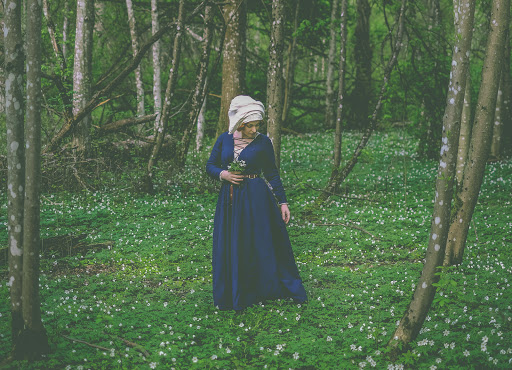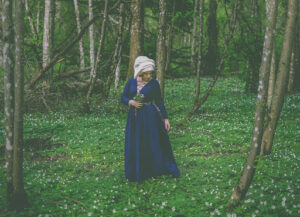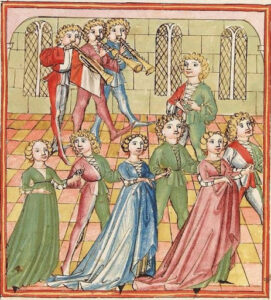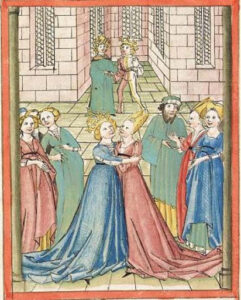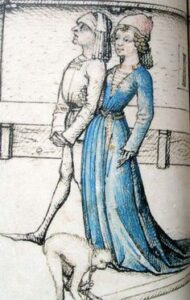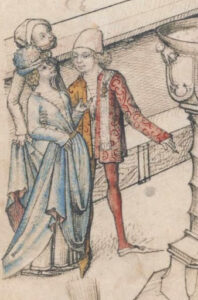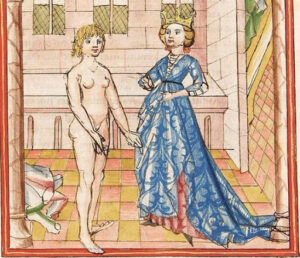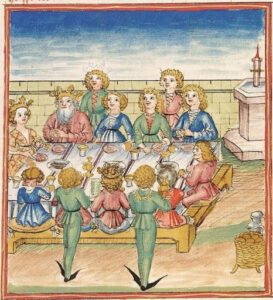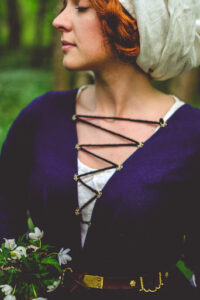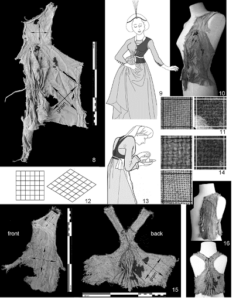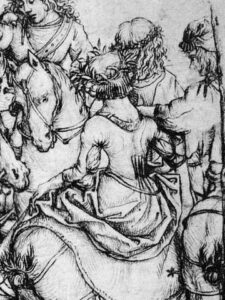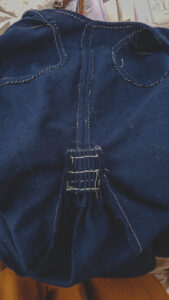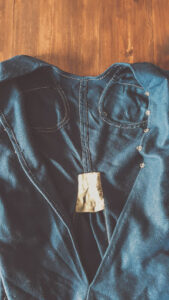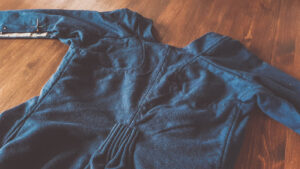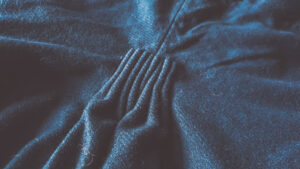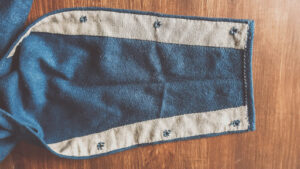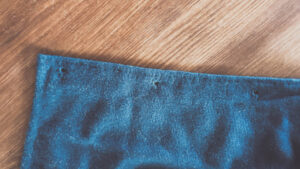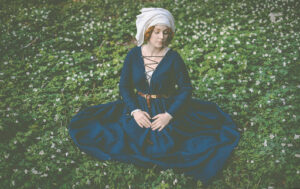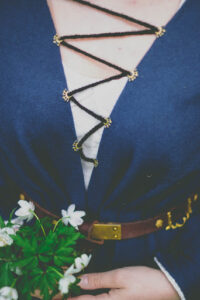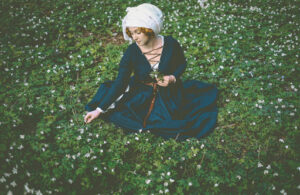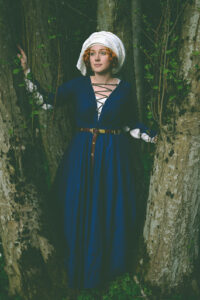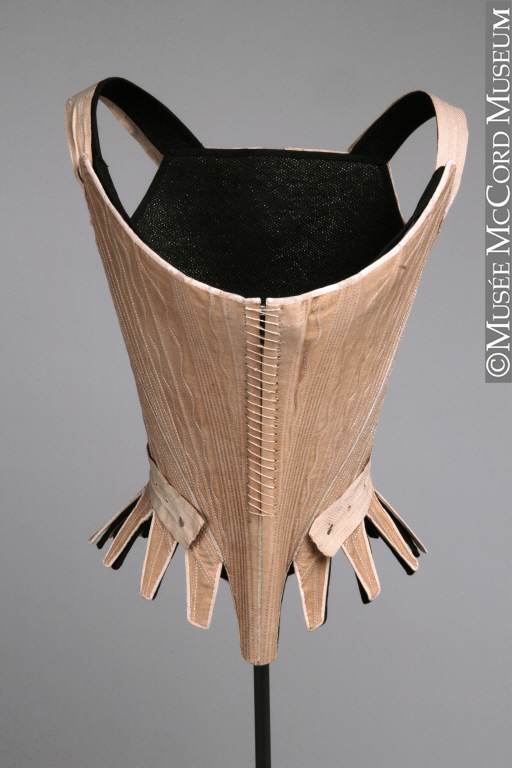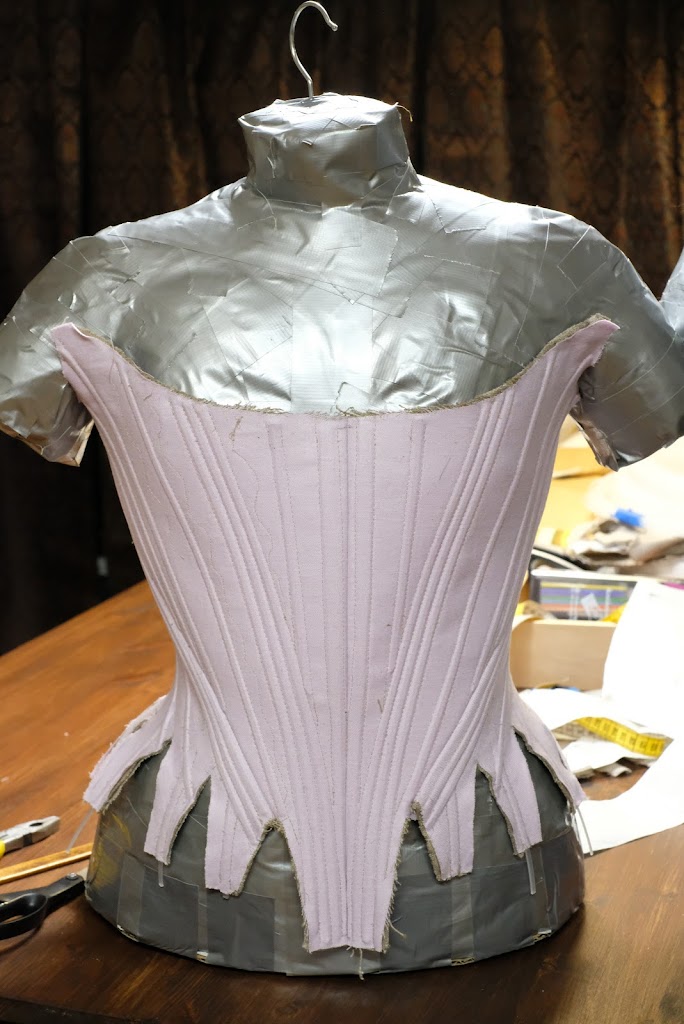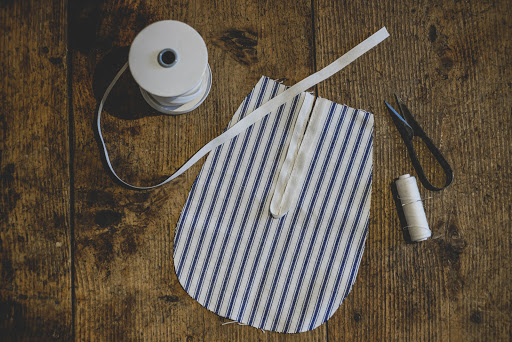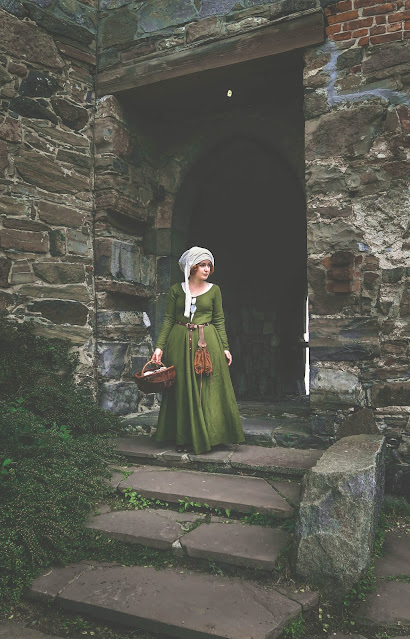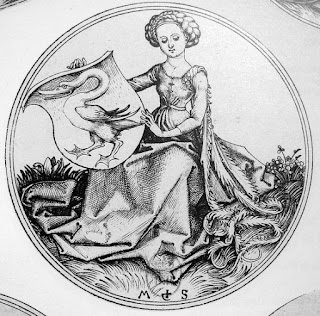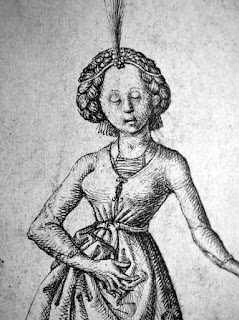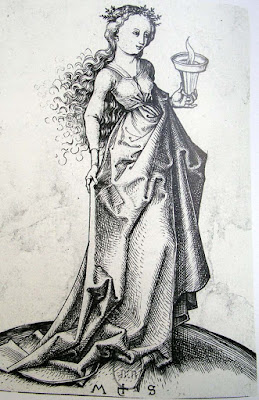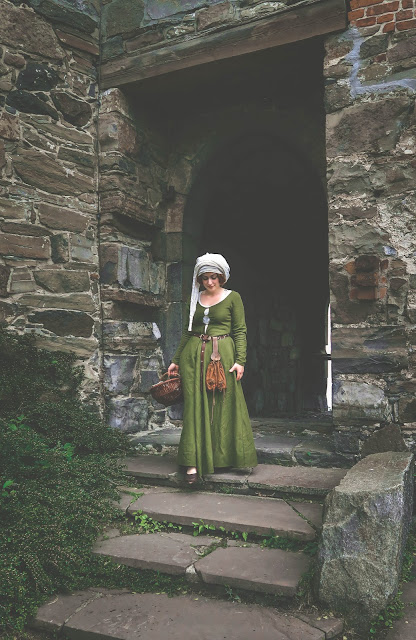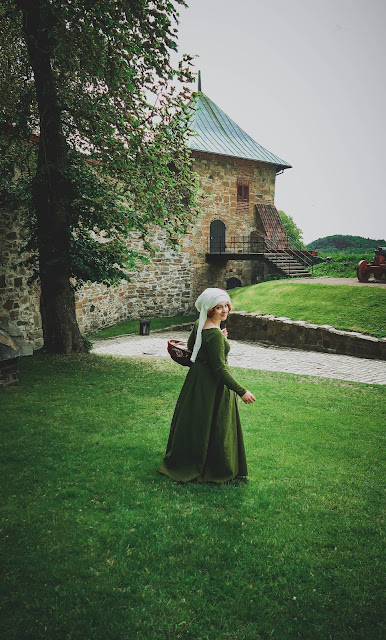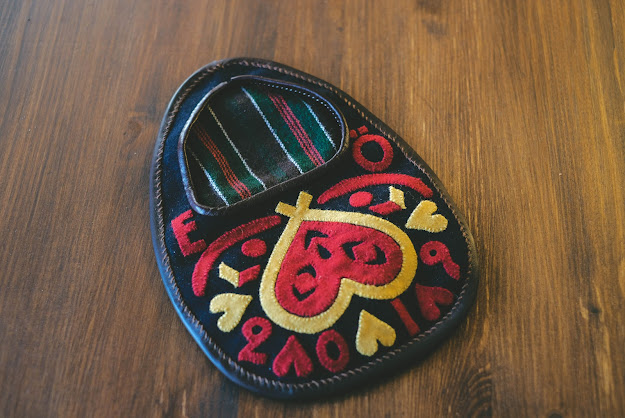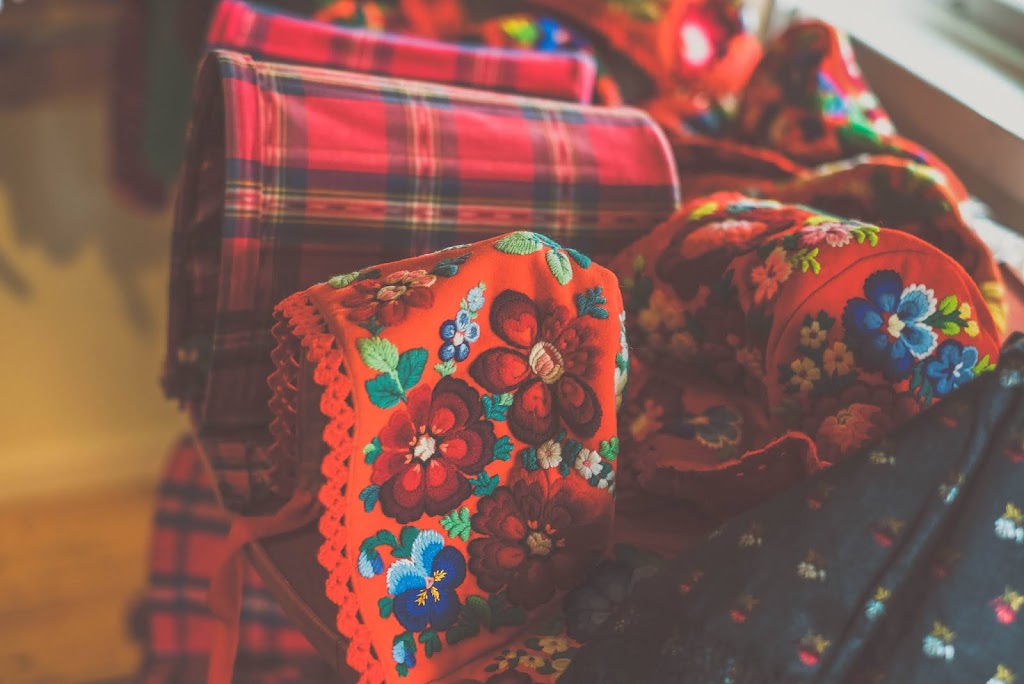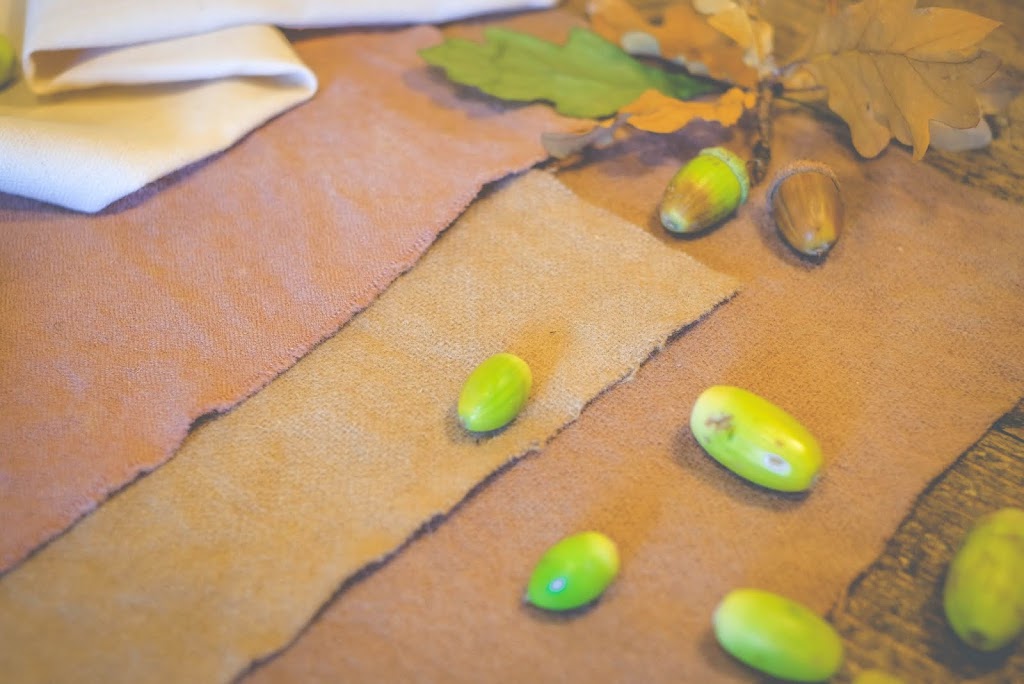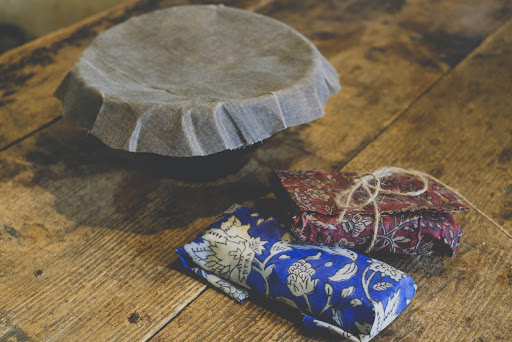-
Blue 15th century dress
Foto by Pernilla Björnsdotter edited by me.Here is a new dress that I made this winter! Im very exited about it since I
have wanted to do it for many years but alot of stuff got in the way… I love
the lacing on these gowns, it seem to have been very popular for a while since
there is so many pictures with ladies wearing this type of dress in different
colors. This dress is also german from late 15th century (yes… I know but I
like it!), mostly around 1470s. The ladies in this pictures dont have any
veils on just various braids that cross on top of the forhead. I cant get that
to look good with my wig so Im wearing a late 15th century turban instead. I
also made mine without a long skirt trail since Im working in the dress. Not
correct but its to much in the way for a working girl. I did my yellow dress
long first but had to cut it so I learnt from my mistake. If you only visit a
market or other event then defenetly go for the long skirt! 🙂Note the guys curly hair! They must have been doing alot of curling up on
fabric scraps haha!Some of the girls have ”underskirts” of some kind. I wonder if they have a
underdress or if its the painters addition. It might be a tight lacing
underdress but I have only seen the linen ones yet so I have to search more.
It is always hard to research under layers of clothing.Dont know whats happening in this picture…but look at that brocade mrr!Foto by Pernilla Björnsdotter edited by me.Foto by Pernilla Björnsdotter edited by me.The pattern
I made this dress aswell as the yellow dress with the typical plate arms that is common in this time period. They are super tricky to make and to make it even harder I made a new version since the arm has a higher slit than my yellow dress, so had to make a new pattern. Since I was in a hurry for a market as usuall I didnt have to much time to perfect the back (soo hard to do that on your self umg..!) but it will do. If I would remake it I would give it a bit more range of movement over the shoulder/arms. On to the patern: Exept for the mog boy dress there are fragments from Lengberg castle that was found not to long ago. In the picture below are pieces of lining from this kind of dress (yey!) These finding are so great since they let us know more about the construction. I like the gore solution in the back and will defenetly try this on the next one, I did a straight top since I have seen that on many pictures aswell (see picture after this one). There is probably many ways to do it.
My pattern pieces basicly look like Queen Margareta of sweden´s dress but with the plate arm back thingy and I aded gores on the sides. I made the pieces in extra wide A-shapes for the pleating in the front.I couldnt stand the tought of putting linen lining in it (cold/heat sensative) so I decided to skip lining and do a solution like this, with linen to cover the pleats and then I made a linen ”waist ribbon” that I could sew the front pleats onto. Ps: I didnt have any blue linen thread so I just took regular instead.Foto by Pernilla Björnsdotter edited by me.Here you can see the front pleats better. I sewed them into my hidden waist ribbon, to keep them in pleace.Foto by Pernilla Björnsdotter edited by me. -
Green late 15th century dress
I dont have any pictures from when I made this dress a few year ago, maybe 2014? But I got many questions about it, since it doesnt look like a regular cotehardie so I tought I should show what I based it on. It is not a fantasy dress but a simple and nice late 15th century German dress.The fabric is a very nice and soft tabby in olive green from my shop.The pattern is my basic cotehardie pattern with S-arm, but with some extra width in the front so it would pleat in the waist. I used 2 brass button and sewed loops in wool yarn and aded 2 or 3 hooks down the waist to close the waist. -
Late 15th century bag – Sent 1400-talsväska
Needed a bad for my 1400s outfits so i took help from Katafalks tutorial. Here you can find the tutorial.Behövde en väska till mina 1400-talsdräkter och tog hjälp av Katafalks tutorial. Här finns den. Hittade en bit mocka-skinn i min gömmor som passade till att bli väska. Den hade dock en gråbrun färg så jag färgade först med narvsvärta, likaså med flärpen.Found a piece of suede in my leatherbox that would do it as a bag. It had a gray brown shade so i coloured it first, the strap aswell.
Hittade en bit mocka-skinn i min gömmor som passade till att bli väska. Den hade dock en gråbrun färg så jag färgade först med narvsvärta, likaså med flärpen.Found a piece of suede in my leatherbox that would do it as a bag. It had a gray brown shade so i coloured it first, the strap aswell.
 Här syr jag på fickorna. Syr med vaxad linnetråd såklart.Here I am sewing the pockets. Im off course sewing with waxed linnen tread.
Här syr jag på fickorna. Syr med vaxad linnetråd såklart.Here I am sewing the pockets. Im off course sewing with waxed linnen tread. Knappen sydde jag av en cirkel som jag stoppade en träbit i, man kan även fylla med små skinnbitar.I made the button from a circle that i put a piece of wood in, you can also fill it with leather pieces.
Knappen sydde jag av en cirkel som jag stoppade en träbit i, man kan även fylla med små skinnbitar.I made the button from a circle that i put a piece of wood in, you can also fill it with leather pieces. Sen trädde jag på glaspärlor på knytremmarna så den inte skulle se exakt likadan ut som Katafalks.Later I put som glas beads on the small straps so it would not look exactly the same as Katafalks bag.
Sen trädde jag på glaspärlor på knytremmarna så den inte skulle se exakt likadan ut som Katafalks.Later I put som glas beads on the small straps so it would not look exactly the same as Katafalks bag.
-
Medieval week in Visby 2014, part 2 – Medeltidsveckan 2014, del 2
MTV 2Vi har haft så himla kul i Visby! Gillar du medeltid eller lajv tycker jag verkligen att du ska försöka ta dig dit! 🙂Sneakpeak på min outfit!Klänning av mig, mer om den här. Tyget från min webshop The historical fabric storeSkärp, skor och väska av mig. Om väskan här.Vattenflaska from CraftHive.We have had so mutch fun! If your into the medieval ages or larping you should go! 🙂Sneakpeak of my outfit.Dress by me, more about it here. The fabric is from my shop The historical fabric storeBelt, shoes and bag by me. About the bag.Water bottle from CraftHive. Late 15th entury is all about big headwraps!
Late 15th entury is all about big headwraps! From the market:
From the market:
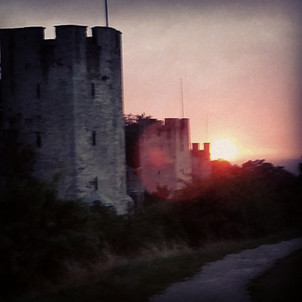
-
Late 15th century headwrap – Huvudduk 1400-tal
Wearing my late 15th century headwrap on the Medieval week on Gotland.How to down below.Har på mig min sena 1400-tals huvudduk på medeltidsveckan. Här nedanför visar jag hur man gör en sån.

 M
M
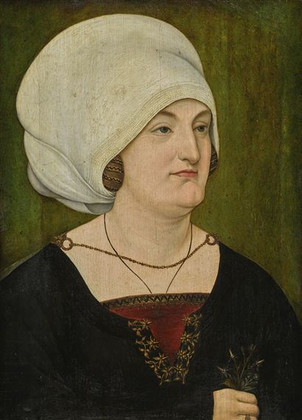 The pattern:I used about 70cm of thin white linnen (150cm wide). Here you can find the linen.Sew all the edges with a whipstitch. When you are done, make the first fold, about 3cm(I did it only in the center, but you can probably do it all the way if you like). Sew it from the bakside with any straight seam. Fold again and sew it from the backside together with the first fold. Keep on doing that until you are happy with the amount of folds.Jag använde ca 70cm av vit tunn linne (150cm bred). Här kan du hitta linne.Fålla alla kanterna på huvudduken. När du är klar, vik det första vecket, ca 3cm djupt (jag gjorde bara vecken i mitten av tyger men du kan göra hela vägen med om du hellre vill det). Sy vecken från baksidan med raksöm. Vik igen så det överlappar den första lite och sy genom allt från baksidan. Fortsätt så tills du är nöjd med mängden veck.
The pattern:I used about 70cm of thin white linnen (150cm wide). Here you can find the linen.Sew all the edges with a whipstitch. When you are done, make the first fold, about 3cm(I did it only in the center, but you can probably do it all the way if you like). Sew it from the bakside with any straight seam. Fold again and sew it from the backside together with the first fold. Keep on doing that until you are happy with the amount of folds.Jag använde ca 70cm av vit tunn linne (150cm bred). Här kan du hitta linne.Fålla alla kanterna på huvudduken. När du är klar, vik det första vecket, ca 3cm djupt (jag gjorde bara vecken i mitten av tyger men du kan göra hela vägen med om du hellre vill det). Sy vecken från baksidan med raksöm. Vik igen så det överlappar den första lite och sy genom allt från baksidan. Fortsätt så tills du är nöjd med mängden veck. When I wrap the cloth around my head I put the cloth a bit to on the side and place the short side to the back of my head and then I take the other side and wrap it over and over the front of my head and tuck it in. A few veil needles are useful to fasten the headwrap in place.You can play around with the headwraps from this period quite a bit and put them in different ways. You can also use it with a steuchlein or a woolbraid for more volume. The bigger the better!När jag virar på mig huvudduken lägger jag den så att pannan hamnar lite till sidan på duken, sen lägger jag den korta änden mot baksidan av huvudet och sen lägger den andra över den och runt över framsidan av huvudet och stoppar in ändan så gott det går. Några huvudduksnålar är väldigt bra för att få den att ligga på plats.Man kan leka runt med huvuddukar från den här tiden en hel del. Den går även att använda med en steucklein eller en ullfläta för mer volym. Ju större desto bättre!
When I wrap the cloth around my head I put the cloth a bit to on the side and place the short side to the back of my head and then I take the other side and wrap it over and over the front of my head and tuck it in. A few veil needles are useful to fasten the headwrap in place.You can play around with the headwraps from this period quite a bit and put them in different ways. You can also use it with a steuchlein or a woolbraid for more volume. The bigger the better!När jag virar på mig huvudduken lägger jag den så att pannan hamnar lite till sidan på duken, sen lägger jag den korta änden mot baksidan av huvudet och sen lägger den andra över den och runt över framsidan av huvudet och stoppar in ändan så gott det går. Några huvudduksnålar är väldigt bra för att få den att ligga på plats.Man kan leka runt med huvuddukar från den här tiden en hel del. Den går även att använda med en steucklein eller en ullfläta för mer volym. Ju större desto bättre!
